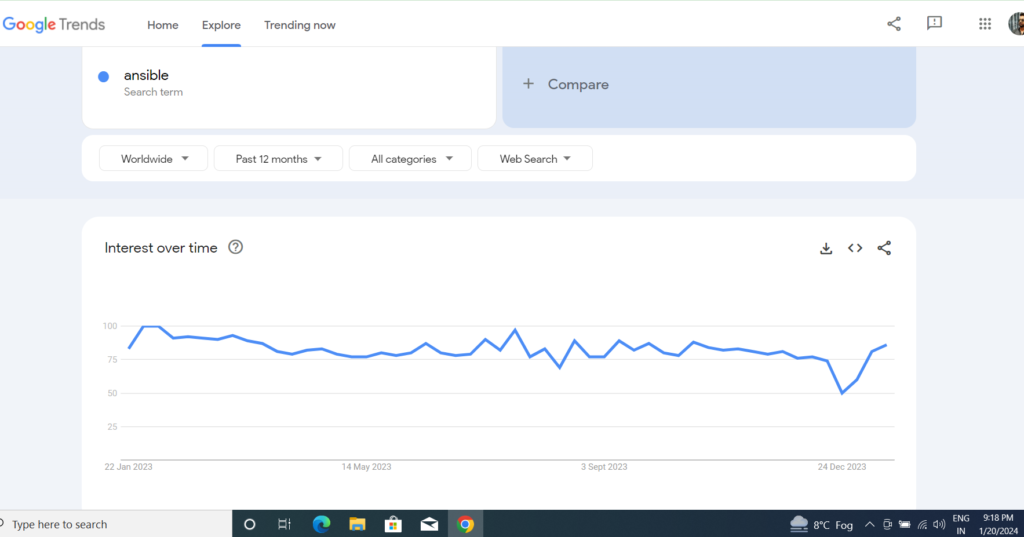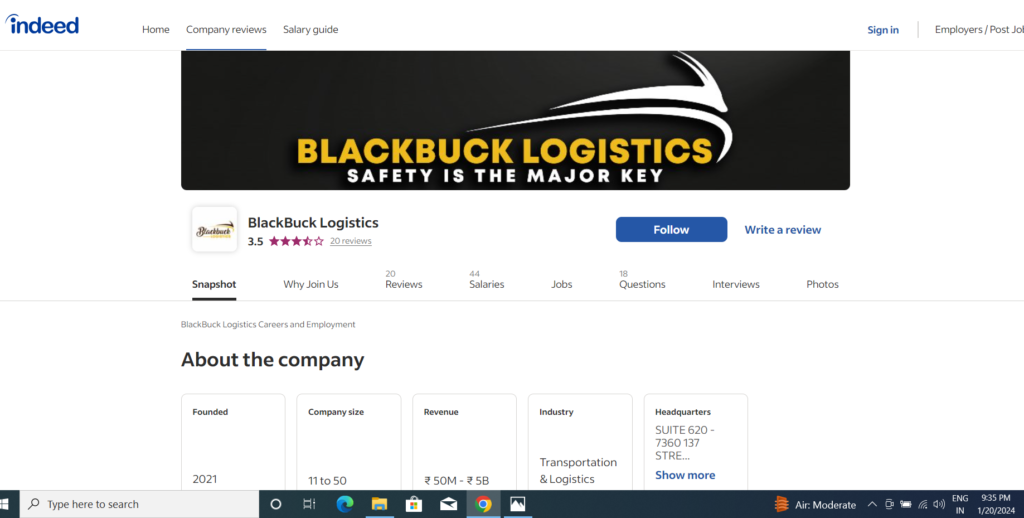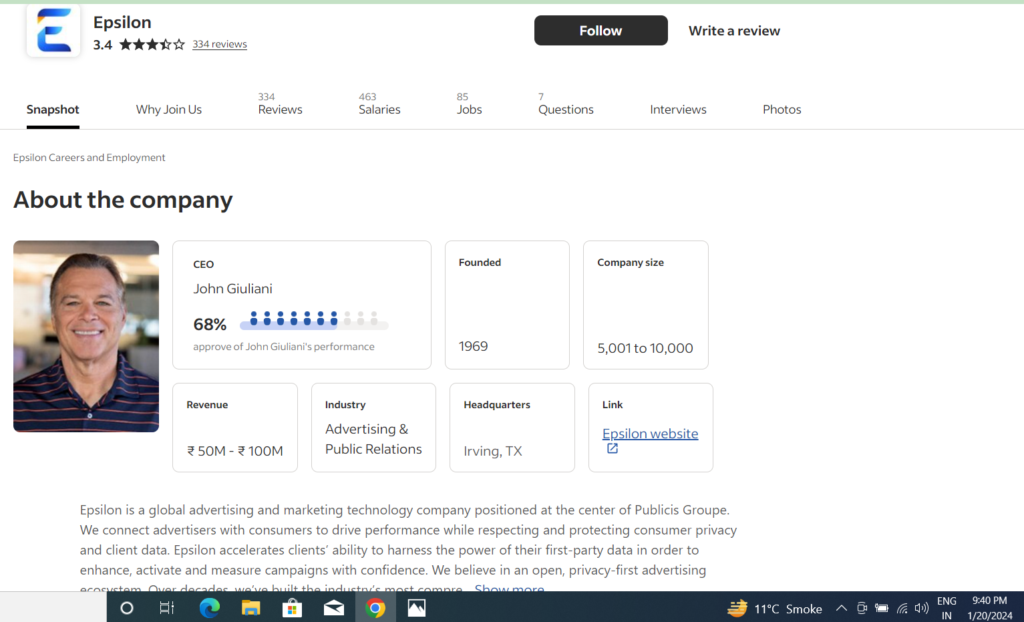Hello everyone, welcome back to this session. So today in this session we’re gonna discuss why we need Ansible today, right? So let’s go ahead and start with the session.
Why We Need Ansible
So, guys, Ansible is equally popular as Puppet in the industry and as you can see from the graph of Google trends, the popularity has not decreased at all, right?

So the popularity of Ansible is the same as Puppet, right? And let’s understand where it impacts the industry, how it impacts the industry with this, this particular trend in the search of an answer, well let’s see that.
So when you talk about JDS or when you talk about jobs for DevOps, right, let’s talk about a company called Blackbuck.

Now this is a random job description that I took from indeed.com, right? As you can see over here, if there is a configuration management requirement, they require both Ansible and the Puppet tools knowledge from that DevOps engineer, right?
Similarly, let’s see some more JDS. This is a company called Epsilon, right? They also require configuration management and they require the knowledge of all three tools that is Ansible, Puppet, or Chef.

Similarly, if you find other GDS or if you look at other GDS of DevOps Engineers you will. You can make out that 80% of those JDS if they have the requirement for configuration management, will expect both Puppet or Ansible from you.
And the reason for that is that no company will want to rely on only one tool for you know a specific need. And when that specific need is very important, it’s very important to have a backup.
The second thing is that for some things one particular tool is great, and for some other things the other tool is great right?
Similarly with Puppet and Ansible, although they do the same thing, some things Ansible is good at and the other things Puppet is good at, right?
So companies use both tools for their requirements. They also keep a backup for a tool if that particular tool somehow fails.
If an update came, then you know Puppet has changed the features for its tool and that and the features are not going well with the company.
In that case, they would need to turn back to a tool that they can use similarly as they were using Puppet, right? And that’s why companies expect a DevOps guy to know both Puppet and Ansible.
So as you saw in the last year, they also expect Chef, but Chef lately in the industry it’s not required that much, right? More focus is on Puppet and Chef, Puppet, and Ansible.
And that is the reason we are learning about Puppet and Ansible.
Advantages of the Ansible
Now if you look at the advantages of Ansible guys that shows why We Need Ansible.
# Easy to Learn
So it’s very easy to learn because you know the commands that are present with Ansible are very relatable. It’s not like you have to learn tough syntax, It’s very easy to learn Ansible, right?
# Written in Python
It’s a written Python, so it’s very fast, right?
# Easy Installation and Configuration Steps
The installation is very easy. Why? In Puppet, as we saw, we had to install a puppet agent and puppet master both on the master and slave and only then we could use the puppet master-slave configuration.
But in answerable that is not the case. In answerable all you need is an answerable master.
# No Need to Install Ansible on Slave
You do not need an answerable client to be installed on the machine and you can directly start working with the Ansible configuration management options by just directly connecting to the slave.
The only requirement that is required on the slave to be able to communicate with the Ansible master is it should have Python 3 installed on it.
If it has no issues, it will direct, it can directly communicate with the Ansible master and that’s an awesome thing to have, right?
# Highly Scalable
And its last point, which is a very important point is it is highly scalable. That is if in your fleet you have 100 servers, if tomorrow you decide to increase your fleet to say 500 servers and configure them using Ansible, it’s very easy to do that right? So it is highly scalable as well.
So these are the advantages of Ansible, right? Now you understand why We Need Ansible.
The only difference that I see when I’m using Ansible, in contrast with Puppet is that the configuration is very easy and the scalability part is also very easy.
For example. Why is it easy? Because like I said, you do not need the Puppet agent to be installed on the slaves. And if you’re adding any slave, in the case of Puppet, you basically would want the Puppet agent to be installed on that particular slave, right?
But in the case of Ansible, like I said, you just need Python installed and then if Python is installed on that slave, that slave is ready to talk to Ansible master.
All right, so guys, these are the advantages of Ansible.
The Popular Companies that are using the Ansible Software
Now let’s go ahead and look at some popular companies that are using the Ansible software.
So companies like Apple, NASA, Intel, Cisco, Twitter, and Percussion, are all using Ansible as a configuration management tool and that’s an awesome thing.
So if you’re planning to apply to this kind of company and if you have the knowledge of Ansible guys, you can go ahead and sit for an interview for these companies based on what you gather from.
So if you’re planning to apply to this kind of company and if you have the knowledge of Ansible guys, you can go ahead and sit for an interview for these companies.
Conclusion
In summary, you have understood why we need ansible and how Ansible is a key participant in the automation space that helps IT operations meet the urgent requirement for efficiency and scalability.
Its robust features and easy-to-use interface make it a vital tool for businesses trying to remain competitive in the rapidly changing digital market.
Adopting Ansible is a calculated step towards streamlining and securing IT operations for the future.


1 thought on “Why We Need Ansible and How it Works?”
Comments are closed.